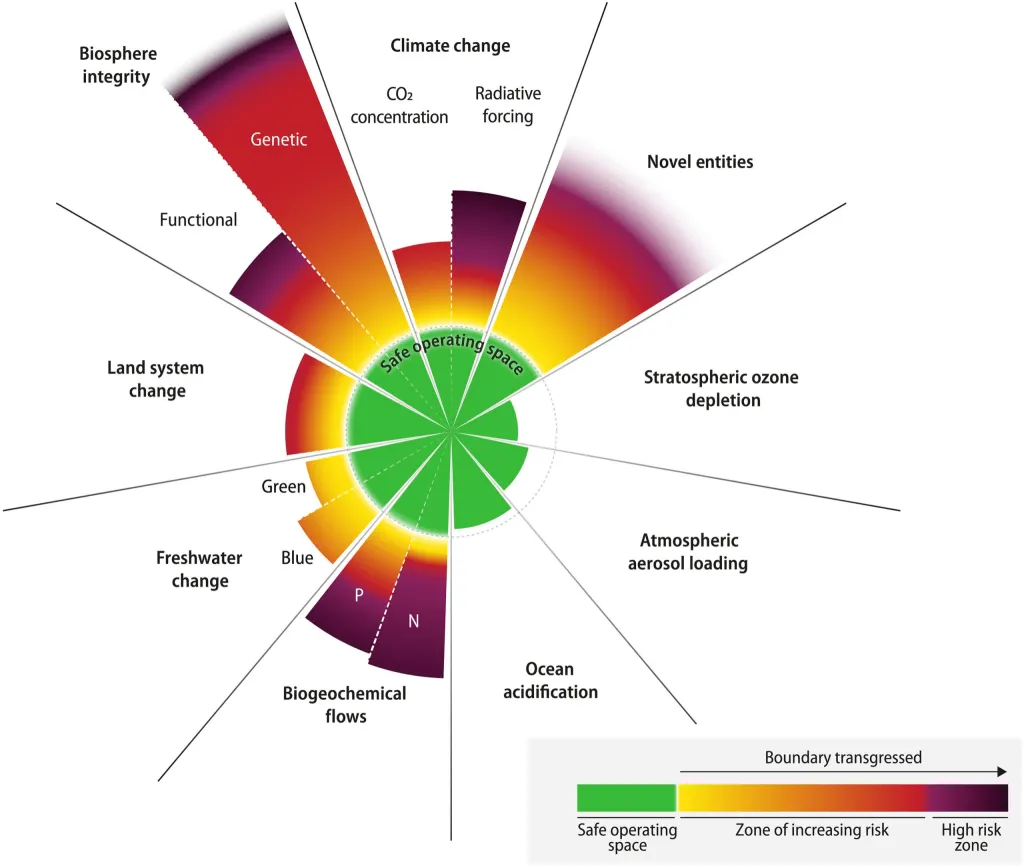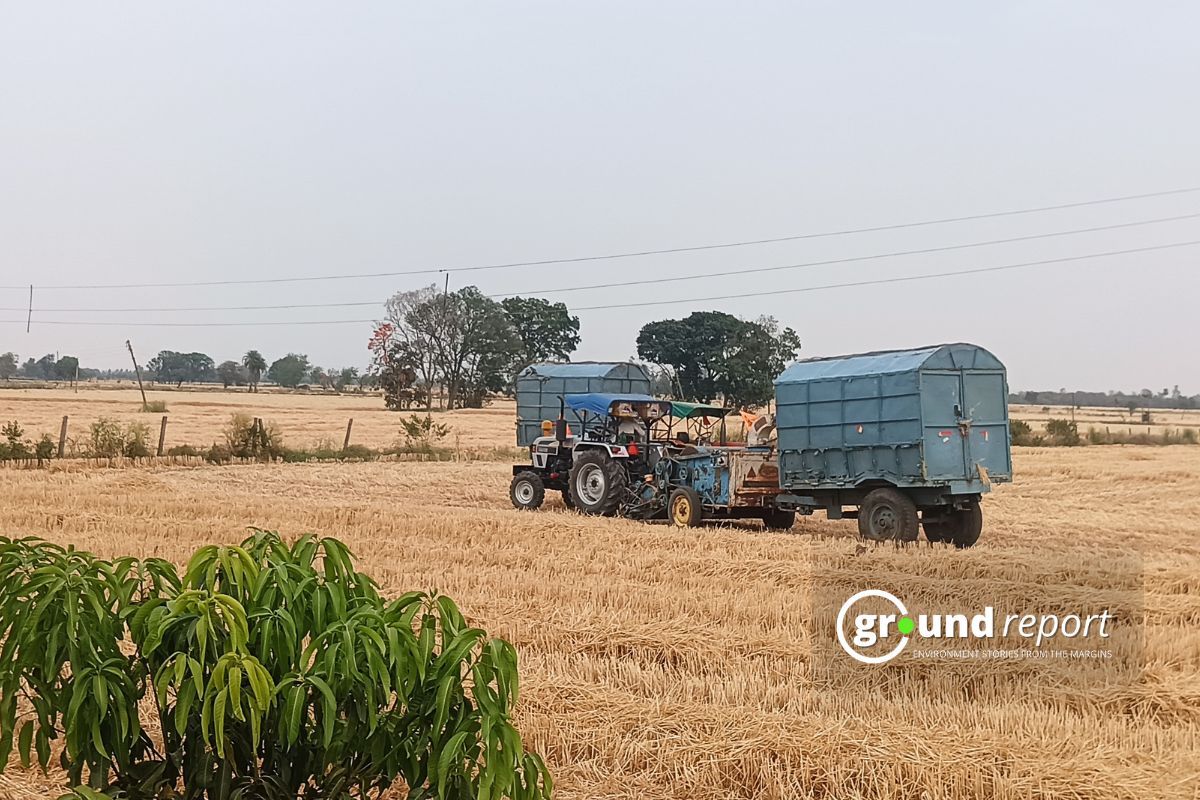- A new study examines nine “planetary boundaries” to assess how human activity is impacting Earth’s habitability.
- These boundaries aim to maintain Earth’s environment similar to the preindustrial Holocene epoch.
- Human activities, such as burning fossil fuels, have pushed us beyond these boundaries.
- The study identifies the nine boundaries, including climate change, biodiversity loss, and pollution.
- While the planetary boundaries model helps us understand our impact, it may be too simplistic for practical environmental management.
In a new study charting whether and by how much we have surpassed nine “planetary boundaries,” scientists warn that human activity is turning Earth into a world that may no longer adequately support the societies we’ve built.
2009 paper outlined planetary constraints
A 2009 paper first outlined nine planetary constraints that keep Earth’s environment similar to that of the world humans lived in during the preindustrial portion of the Holocene epoch. The analysis builds on this paper.
The industrial revolution began and humans started burning large amounts of fossil fuels and sending heat-trapping greenhouse gases into the atmosphere, which ended the past 10,000-year period of the Holocene epoch. In the new research, published on Wednesday in Science Advances, researchers raise the alarm about what the potential consequences of this departure from humans’ baseline might be.
However, the theory says, human activities are rapidly pressing past those boundaries, putting Earth’s safe operating space at high risk.

The new paper defines the nine boundaries as climate change, change in biosphere integrity, stratospheric ozone depletion, ocean acidification, biogeochemical flows including phosphate and nitrogen cycles, land system change, freshwater change, atmospheric aerosol loading, and novel entities (human-caused pollution from microplastics, synthetic chemicals, radioactivity, and more).
In 2009, a team of international researchers first proposed the planetary boundaries framework in a paper published in Nature. In 2015, the same authors published a revised version of the theory. However, these earlier versions had many knowledge gaps. For instance, at the time, the authors did not define the quantitative boundaries for novel entities, atmospheric aerosol loading, and the functional integrity portion of the biosphere boundary.
Planetary model assesses Earth’s challenges
The planetary boundaries model considers different factors that affect the Earth’s habitability, not just climate change. It looks at things like biodiversity loss, pollution, land use, and elements like nitrogen and phosphorus. These factors are interconnected, so changing one can affect others.
However, it’s challenging to explain how these factors interact. Researchers have refined some of these boundaries but the overall message remains the same: we’re living on a planet unlike anything in history, facing environmental and societal challenges.
Some concerning issues include the release of chemicals like phosphorus and nitrogen, which harm ecosystems. Climate change is also a major concern, with high carbon dioxide levels and disruptions in Earth’s energy balance.
The study emphasizes that protecting life on Earth is as important as addressing climate change. It looks at genetic diversity and ecosystem health, finding high extinction rates and human use of natural resources far beyond historical levels.
Another issue is artificial chemicals in our environment, like plastics and untested chemicals. Forest loss is significant, and freshwater use has increased. Only ozone depletion is improving, thanks to international agreements.
While the planetary boundaries model helps us understand our impact on Earth, some argue that it doesn’t provide solutions. We need to move from identifying problems to finding practical solutions that benefit everyone, not just environmental enthusiasts.
New framework adds to grim outlook
Simon Lewis, a professor of global change science at University College London and the University of Leeds, who was not involved in the study, says the new framework offers a “strikingly gloomy update on an already alarming picture.”
Lewis informed Mongabay in an email that the planetary boundaries studies indicate that Earth has departed from the conditions of the Holocene, and as a result, we now inhabit the Anthropocene. Lewis further stated that humans are responsible for destroying biodiversity, altering the climate, and polluting our habitat to such a significant degree that we have pushed our planet beyond the stable conditions that facilitated the emergence of human civilizations. The planet is transitioning into a new, much less stable state, which will not be as favourable for our well-being. This serves as an extremely stark warning regarding the imperative need for profound structural changes in our approach to environmental conservation.
However, he emphasizes that the simplicity of the planetary boundaries framework stands out as its “central weakness.”
He says that because the risks posed by environmental change are much higher for people with low income and other vulnerable people, there are no single planetary boundary values that apply globally. For example, if we limit global heating to 1.6°C using pro-development policies and major investments in adapting to climate change, the damage and suffering would be vastly less than if we limit warming to 1.5°C but do this using policies that help the wealthy and disregard the people with low-income. The world is more complex than nine boundaries.
“The planetary boundaries concept is a heroic attempt to simplify the world, but it is probably too simplified to be of use in practically managing Earth,” he adds. “But it does work as a science-led parable of our times.”
ALSO READ
- Climate Change Is Making Hurricanes More Dangerous?
- 6000 Trees Illegally Cut By Uttarakhand Govt In Corbett Tiger Reserve
- China’s Largest Lake Loses 70% Of Its Surface Due To Drought
- Understand Different Aspects Of Climate Colonialism
You can connect with Ground Report on Facebook, Twitter, Koo App, Instagram, and Whatsapp and Subscribe to our YouTube channel. For suggestions and writeups mail us at GReport2018@gmail.com








